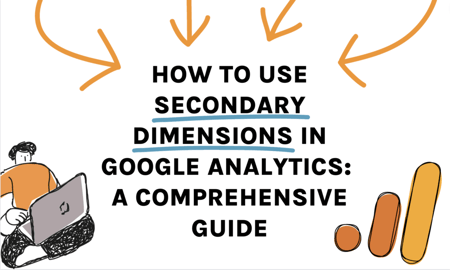SEO Analytics Introduced: Exploring Secondary Dimensions for Actionable Information
Transform Your Data Comprehending With Secondary Dimensions
Checking out data via the lens of secondary measurements opens a world of untapped insights, using a more nuanced perspective on the complexities of your dataset. By unraveling the layers below the surface metrics, you can discover patterns and relationships that may have or else gone undetected, leading the way for informed decision-making and calculated optimizations. This strategic utilization of secondary dimensions not just enhances your information comprehension however also works as a driver for opening the complete capacity of your analytics ventures.
Advantages of Additional Dimensions

By layering extra dimensions onto existing data, companies can examine the impact of various elements on crucial metrics, helping them make even more enlightened choices. Generally, the utilization of secondary measurements leads to extra insightful and robust information analysis, empowering organizations to drive strategic actions based on a deeper understanding of their data.

Exactly How to Implement Second Measurements
To efficiently implement secondary measurements in information analysis, companies must initially recognize vital variables that line up with their logical goals and objectives. It is essential to take into consideration just how these additional dimensions will provide extra context and deepness to the primary information being evaluated.

Studying Information With Additional Measurements
Utilizing second dimensions in data analysis enhances the depth and context of insights originated from key information. By integrating additional measurements into your analysis, you can get a much more extensive understanding of the relationships and patterns within your information. This process includes examining the primary data with different lenses or perspectives, which can reveal concealed relationships or fads that might not be promptly obvious when assessing the information utilizing just main dimensions.
Examining information with second dimensions permits you to segment and see here group your data in various means, supplying an extra nuanced view of your dataset. secondary dimensions. This division can aid you identify details aspects that may be affecting the outcomes you are studying. By piercing down into the data using additional dimensions, you can reveal useful insights that can guide decision-making and technique growth
Finest Practices for Secondary Measurements
When incorporating secondary dimensions right into data analysis, accuracy in defining the measurements is critical for extracting purposeful insights. It is important to select additional measurements that match the primary information successfully. One finest method is to pick dimensions that supply extra context without overwhelming the evaluation. Remember the certain goals of the analysis and choose dimensions that straighten with those purposes.
One more ideal practice is to stay clear of redundancy in measurements. Guarantee that the secondary measurements add new perspectives or details to the evaluation, instead of duplicating details already existing in the main measurements. This will assist prevent complication and improve the interpretation of the information.
In addition, it is necessary to think about the scalability of the analysis when picking secondary dimensions. Choose measurements that can be conveniently expanded or readjusted as required to suit Source future information requirements or modifications in logical focus. By following these ideal techniques, analysts can maximize the value of second dimensions in information evaluation and gain much deeper understandings right into their datasets.
Making Best Use Of Insights Via Secondary Measurements
Integrating second dimensions purposefully boosts information analysis by giving a deeper understanding of the connections within the dataset (secondary dimensions). By optimizing insights through secondary measurements, analysts can uncover valuable patterns, fads, and dependences that may not be quickly evident when analyzing the information with primary measurements alone
One secret benefit of making use of secondary dimensions is the ability to segment and filter information extra exactly. This segmentation permits for an extra granular analysis of specific subsets within the dataset, making it possible for analysts to determine correlations and causations that might have otherwise been forgotten.
In addition, additional dimensions can help in contextualizing main data points by adding layers of info that offer an even more comprehensive sight of the data. This you can try here contextualization is critical for making notified decisions based upon a holistic understanding of the dataset.
Conclusion
Finally, including additional dimensions in information evaluation processes supplies a more nuanced and comprehensive understanding of information, bring about improved understandings and calculated decision-making. By incorporating extra variables that line up with logical goals, concealed relationships and trends can be exposed, offering a much more in-depth and contextualized view of information. This method makes the most of the potential for optimization and reveals new opportunities within procedures.
In general, the usage of additional measurements leads to much more robust and insightful data analysis, encouraging organizations to drive tactical actions based on a much deeper understanding of their data.
Making use of second dimensions in data analysis boosts the depth and context of insights obtained from primary information.Examining data with second measurements allows you to section and team your data in various means, providing a more nuanced sight of your dataset.When integrating secondary measurements into information evaluation, precision in specifying the dimensions is essential for drawing out purposeful insights. Ensure that the secondary measurements add brand-new point of views or information to the analysis, rather than replicating information already present in the main measurements.